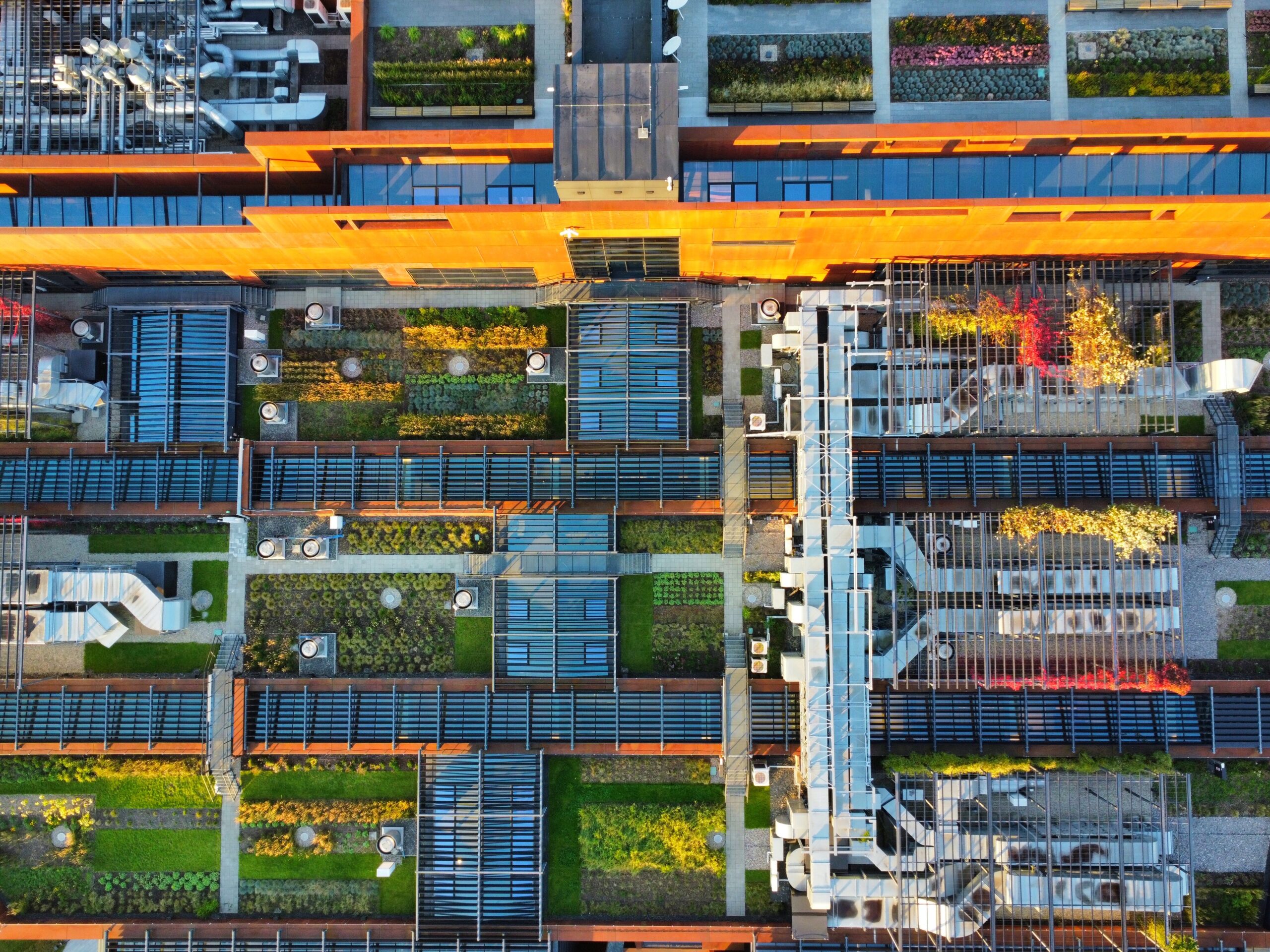GREEN ROOF
Green roofs — sometimes referred to as ‘vegetated roofs’ or ‘eco-roofs’— consist of a waterproofing membrane, growing medium (soil) and vegetation (plants) overlying a traditional roofing system. Green roofs can help mitigate the problems that cities create by bringing the natural cooling, water treatment, and air filtration properties that vegetated landscapes provide to the urban environment. Architects and planners can use green roofs to help solve environmental problems by bringing nature back to the city in key ways.
Green roofs that are properly designed, constructed and maintained, are beneficial socially, environmentally, and fiscally. They are an important tool to increase sustainability and biodiversity and help to decrease energy consumption, urban heat island impacts, and greenhouse gas generation.
Green roofs have been around a long time. Prairie homesteaders built sod houses when settling the frontier. Although they have been used infrequently for decades, green roofs are now being revived and studied for their environmental benefits and energy savings. Did you know a green roof can increase the life expectancy of a roofing system by protecting the roofing materials from direct ultra–violet radiation and extreme temperatures? As a result, the roof structure can require less maintenance, saving the owner money in replacement costs over the long–term life of the roofing system. A well–maintained green roof can more than double the number of years before a roof needs to be replaced compared to a standard roof, making up for some of the added costs of installation.


